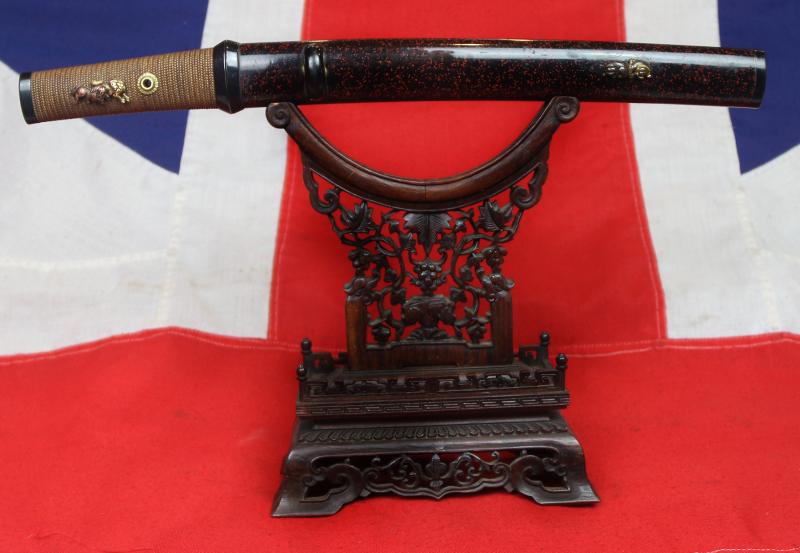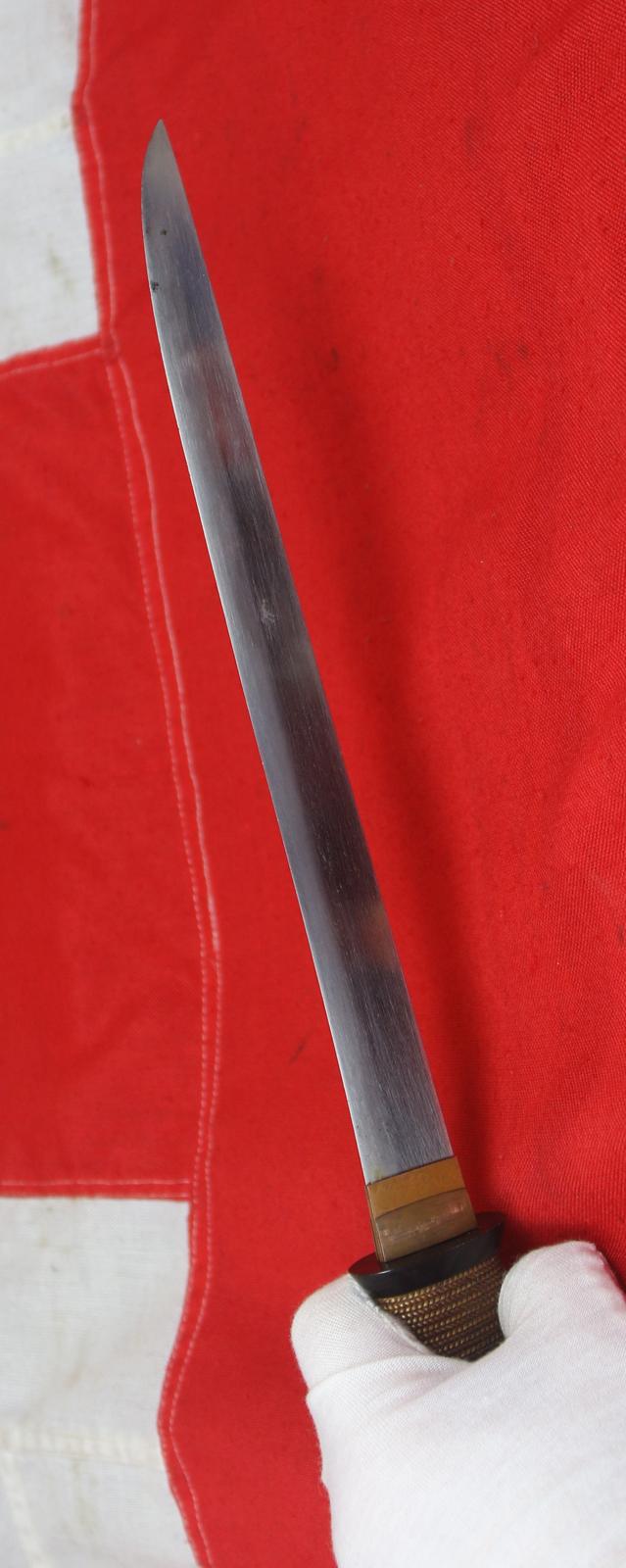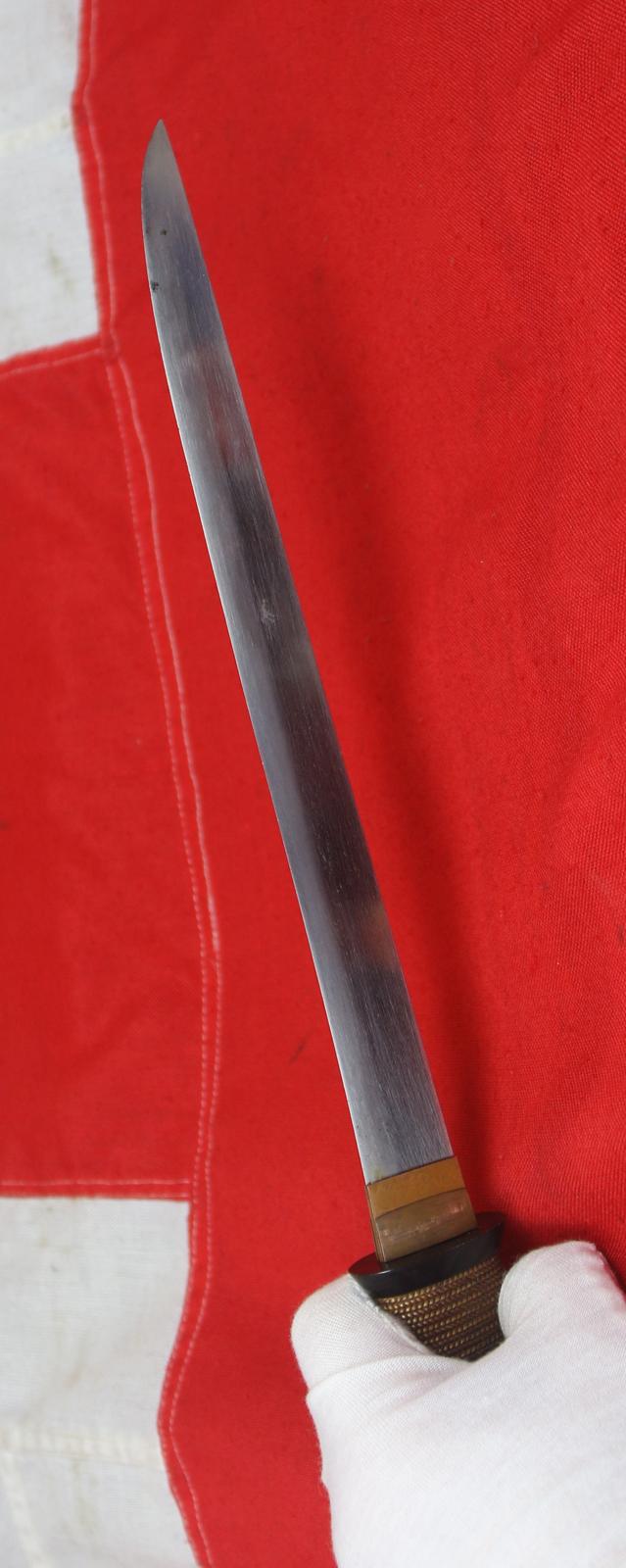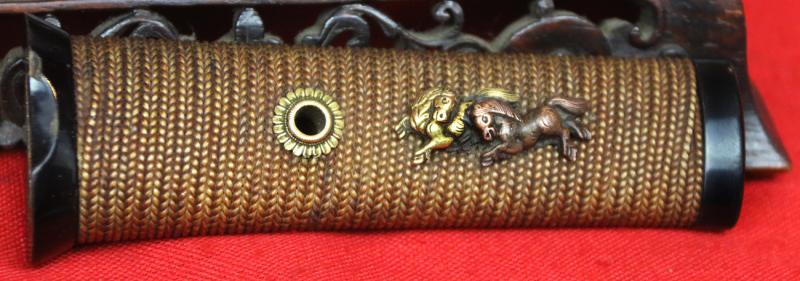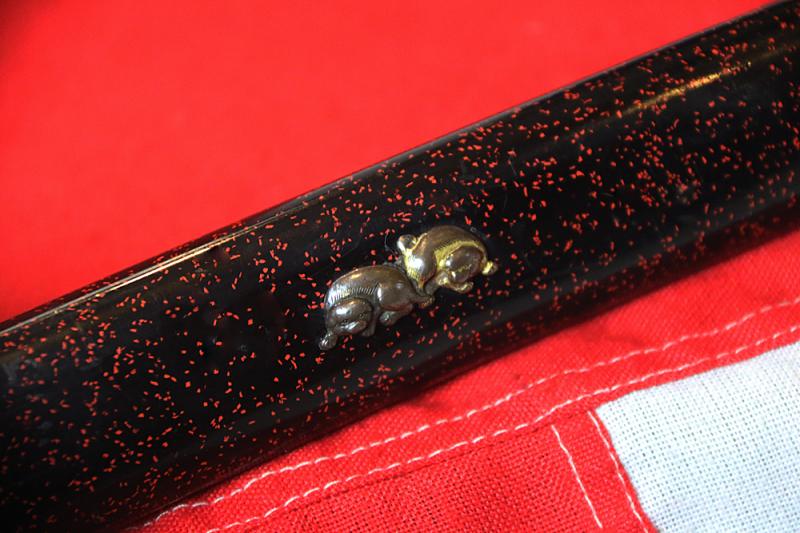An Exceptionally Beautiful, Almost 500 Year Old Ancient Samurai Aikuchi Tanto, Signed Bizen Osafune Ju Sukesada
Aikuchi tanto are intentionally designed to have an uninterrupted profile, for ease of access, for the securing and withdrawing from an obi, and bear no tsuba sword guard. This is an absolute beauty, in fabulous condition.
It is from a museum grade small collection of remarkable and exceptional samurai tanto. Acquired by a discerning collector over many years seeking an example of all the varrying forms and styles of tanto and their blades, from the zenith of the samurai period of the Koto era and beyond.
Each one is a veritable work of art demonstrating the skill of craftsmen at the apex of their careers, as the very finest swordsmiths and koshirae fitting makers, that has been combined to create wonders of rare beauty. Not only to represent the acme of samurai art, but also functional and usable swords [in the culture of samurai, even small tanto are classified as swords] for the samurai of the highest rank and status, including daimyo and lords, from the Koto to Edo period.
It has a very fine signed Koto ancient blade, in superb Edo polish with a sophisticated, deep, straight hamon. The saya is an absolutely stunning, original Edo period beauty, of finest two colour urushi lacquer of cinnabar flecks red over deep lustrous black. The fabulous menuki are contrasting pure gold and copper gambolling ponies, and the kozuka is decorated a pair of mythical hooved beasts [similar to shishi lion dogs] on a nanako ground, and a small saya mount is Alison in gold and copper of two shishi puppies.
All the mounts are carved buffallo horn. The tsuka is bound with a very fine quality micro herringbone pattern ito, and intricate finely chiselled round, flowerhead form, gold mukugi rims.
Made and signed by one of the early Sukesada, from the Sukesada school of master swordsmiths, in around 1500, between around 500 and 530 years ago.
The highly regarded Sukesada line of swordsmiths descended in the Osafune school and are recorded as far back as the end of the Nambokucho period (around 1394). This blade here is placed it in the Sue-Koto Period (1469-1596).
The whole tanto is in very good condition with just a few natural aging small urushi lacquer surface nicks.
The original Edo period urushi lacquer on the stand is in simply excellent condition for age and shows most elegant intricacy, it reveals within that intricacy the finest craftsmanship and beauty worthy of a master of the art of urushi decor. Japanese lacquer, or urushi, is a transformative and highly prized material that has been refined for over 7000 years.
Cherished for its infinite versatility, urushi is a distinctive art form that has spread across all facets of Japanese culture from the tea ceremony to the saya scabbards of samurai swords
Japanese artists created their own style and perfected the art of decorated lacquerware during the 8th century. Japanese lacquer skills reached its peak as early as the twelfth century, at the end of the Heian period (794-1185). This skill was passed on from father to son and from master to apprentice.
The varnish used in Japanese lacquer is made from the sap of the urushi tree, also known as the lacquer tree or the Japanese varnish tree (Rhus vernacifera), which mainly grows in Japan and China, as well as Southeast Asia. Japanese lacquer, 漆 urushi, is made from the sap of the lacquer tree. The tree must be tapped carefully, as in its raw form the liquid is poisonous to the touch, and even breathing in the fumes can be dangerous. But people in Japan have been working with this material for many millennia, so there has been time to refine the technique!
Code: 24538
4750.00 GBP


